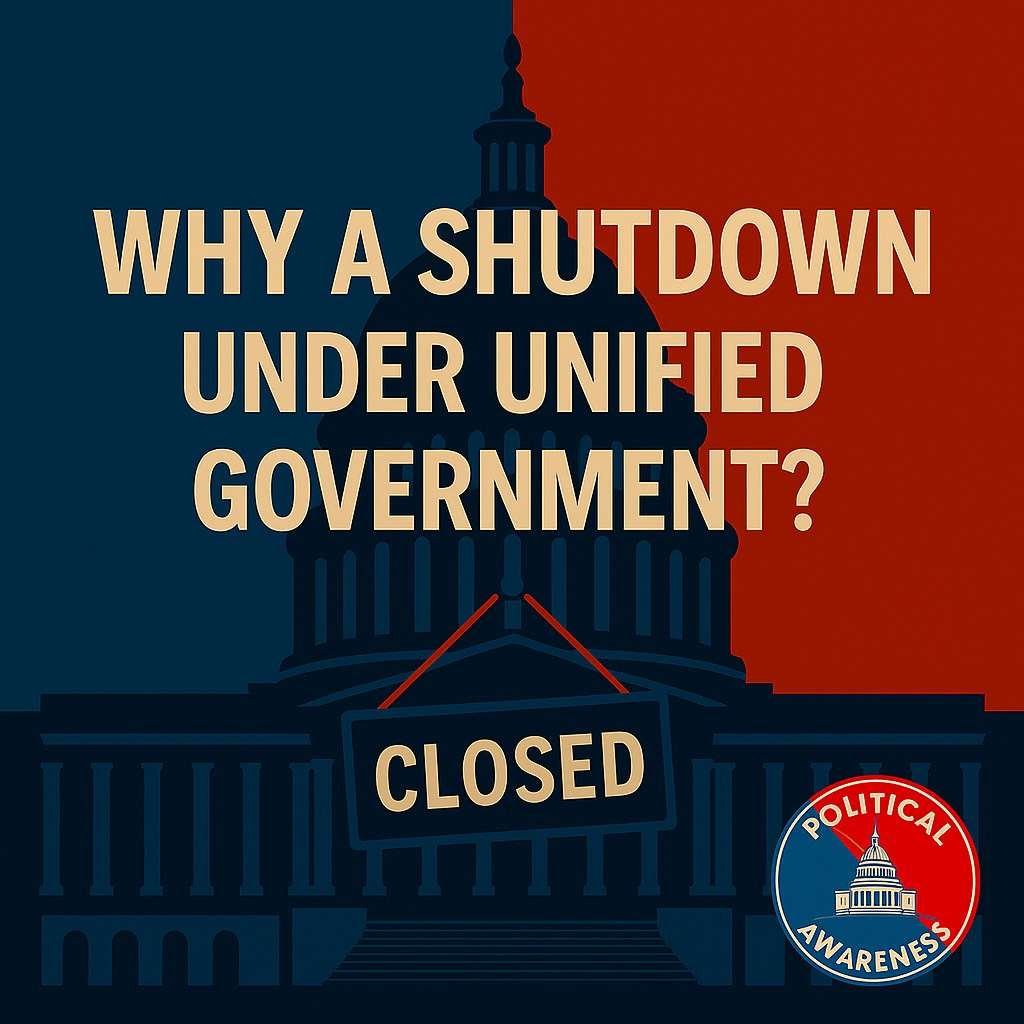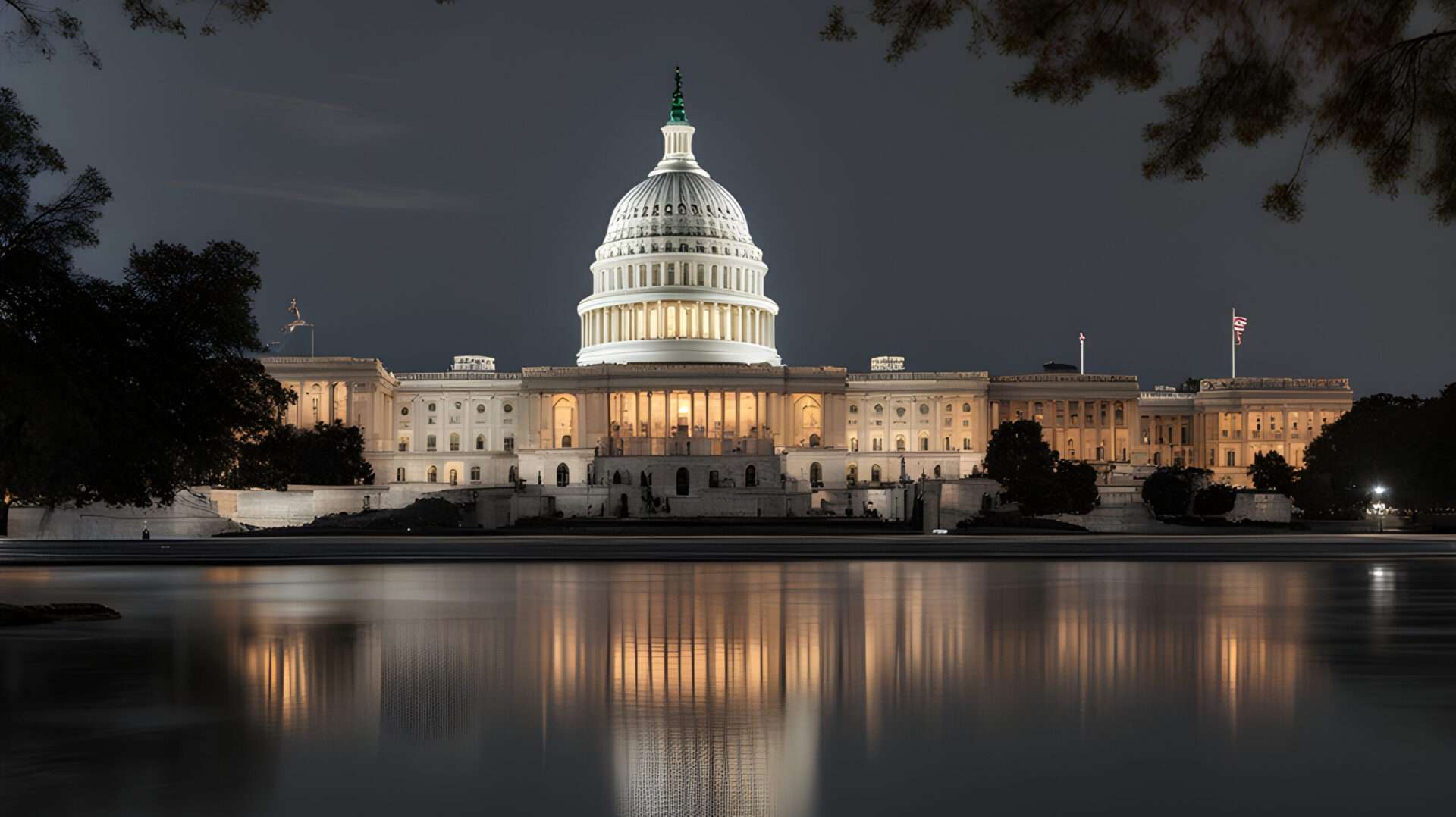
Why a Shutdown Under Unified Government?
Government shutdowns in the United States have become recurring dramas. Deadlines loom, budgets stall, and federal agencies brace for impact. Typically, these standoffs are the byproduct of divided government: one party controlling the White House, the other dominating at least one chamber of Congress. Each side digs in, and the result is gridlock.
But what happens when a single party controls the presidency, the House, and the Senate — and the government still shuts down? That paradox is the focus of today’s shutdown. It raises deeper questions about party unity, the structure of American governance, and whether the system itself has evolved to make paralysis a permanent feature rather than an occasional failure.
A Rare Historical Precedent
Shutdowns under unified government are exceedingly rare. The only notable example came in 1980, when President Jimmy Carter faced a one-day lapse in funding for the Federal Trade Commission. Democrats controlled both chambers at the time, but the impact was minimal. The shutdown lasted a single day and affected only one agency.
By contrast, today’s shutdown is broad, prolonged, and occurring under a Republican president, House, and Senate. This is not merely a footnote in congressional history. It is an unprecedented test of how one-party rule functions in an era of deep internal divisions.
The Mechanics: Why Shutdowns Happen
Shutdowns occur because of the Antideficiency Act, which prohibits most federal spending without explicit authorization from Congress. If appropriations bills or temporary continuing resolutions are not passed before a deadline, agencies must halt “non-essential” operations.
This rule applies regardless of political control. In theory, a unified government should make passing appropriations easier. But theory collides with political reality when factions within the majority party use the deadline as leverage.
Intraparty Divisions
Modern political parties are not monolithic. They are coalitions of blocs with competing priorities. Within the Republican Party, differences over fiscal restraint, immigration policy, and social issues can be sharp. A relatively small group of lawmakers can withhold their votes unless their demands are addressed, effectively blocking funding bills.
This phenomenon is amplified by narrow majorities. When the margin of control in Congress is slim, even a handful of dissenters can stall legislation. The result is that intraparty negotiation becomes as difficult — if not more difficult — than negotiation across party lines.
Shutdown as a Political Tool
To some lawmakers, a shutdown is not merely an unfortunate outcome; it is a tactic. By allowing the government to partially close, they send a message to their base that they are fighting for principles such as spending cuts or stricter immigration enforcement.
The disruption becomes evidence of resolve. It can also serve as bargaining power: the longer a shutdown lasts, the more pressure builds on leadership to concede to demands. Critics argue this transforms a basic responsibility — funding the government — into a bargaining chip. Supporters counter that the tactic is necessary to force attention on issues they believe are neglected.
Consequences Beyond Washington
The effects of a shutdown ripple beyond the Capitol. Hundreds of thousands of federal workers face furloughs or delayed paychecks. Government services, from national parks to small business loan processing, slow or stop. The uncertainty can drag on the economy, rattling markets and straining families who rely on federal programs.
Politically, shutdowns have often backfired on those seen as unwilling to compromise. In past episodes, approval ratings for Congress have dropped sharply, and the majority party has struggled to explain why, despite holding power, it could not keep the lights on. For a party in unified control, the optics are even harsher: voters may interpret the shutdown not as principled resistance but as proof of dysfunction.
A Global Comparison
Looking abroad offers perspective. In most parliamentary democracies, a failure to pass a budget is treated as a vote of no confidence. The government falls, and new elections are called. While disruptive, this process prevents prolonged shutdowns.
The U.S. system is different. The separation of powers allows funding disputes to persist without forcing a political reset. This design makes shutdowns possible even under unified government. Yet it also highlights a uniquely American paradox: the rules that prevent one branch from overpowering another can also enable a minority faction within a majority to halt the machinery of government.
The Larger Question of Governance
This raises a broader question: what does a shutdown under unified government reveal about American politics today? It suggests that party labels mask deep internal divides. This shows that the incentives driving individual lawmakers — media visibility, primary elections, ideological purity — can outweigh the collective responsibility of governing.
It also illustrates how polarization operates within, not just between, political parties. Even when voters deliver one-party control, the results may be fractured. The assumption that electoral majorities equal functional governance no longer holds.
Conclusion
Shutdowns are often portrayed as partisan showdowns. This one, however, is different. It is not a battle between Republicans and Democrats but between factions within a single party that already holds power.
When the government shuts down under unified control, the question is not whether compromise with the opposition is possible. It is whether governing itself is still possible in a system where electoral victory does not guarantee cohesion.
In the end, the shutdown under one-party rule forces Americans to confront a paradox: if the majority cannot govern, then what does majority rule really mean?

Leave a Reply